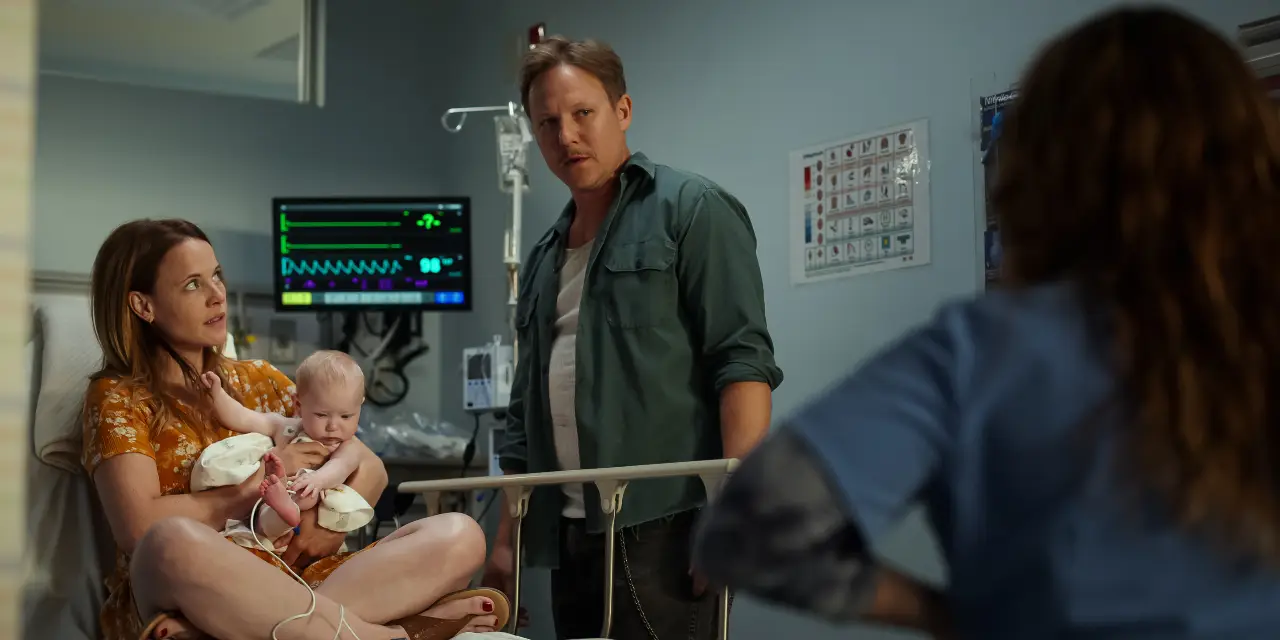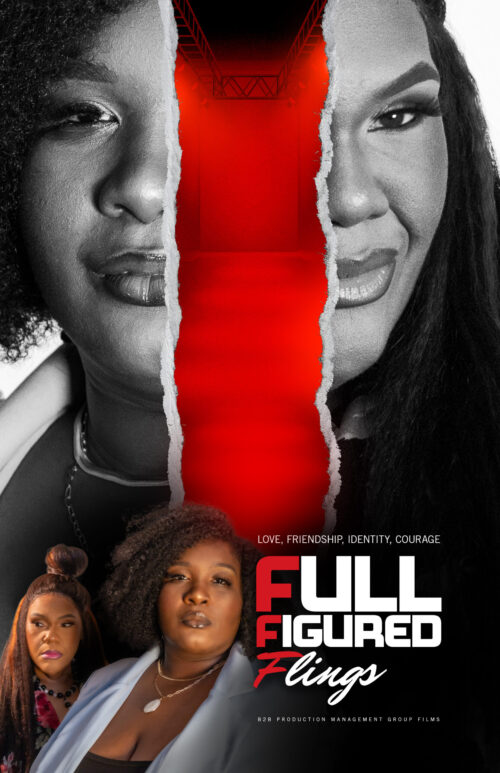We Speak Actors
Michael William Freeman on his exciting role in new Netflix medical series, ‘Pulse’

American actor Michael William Freeman has appeared in many hit shows, but is perhaps best known for playing militia member Blake Sarno in ‘Fear The Walking Dead’. Now he’s swapped the zombie apocalypse for a medical procedural, playing the character of Glenn Vogel in the new Netflix series ‘Pulse’, which follows the personal and professional lives of doctors and staff at a busy Miami trauma centre. We talk to Michael about working with his idols, the joys of collaboration, and why ‘Pulse’ feels like it comes from the golden age of TV.
Tell us about your experience working on the new Netflix series ‘Pulse’?
“It was epic. I had such an amazing time on this show, and it was really great to work with Netflix. The very first day I stepped on set, the energy was palpable. Everyone was just so happy and grateful to be part of this project – it really elevated the whole process.”
“Sometimes work can feel like a grind, but this show was a real pleasure. It was such a warm and welcoming environment, and I know that is reflected on screen.”
What was it like working with series creator Zoe Robyn and co-showrunner Carlton Cuse?
“Man, what an absolute dream! Zoe is such a brilliant talent, her writing is so rich and compelling. And Carlton is a master of his craft, an absolute legend in the industry. Yet they both approach the work with zero pretension. It was inspiring and heartening to be around them both. I think it was the most supportive, collaborative environment I’ve ever worked in; it really felt like a family on set. I’d do anything for those two.”

This is Netflix’s first medical drama – did you enjoy working in this genre?
“I’ve done medical procedurals before, which are fun, but this is something different. The heart of this show is the relationships. Don’t get me wrong, there’s plenty of action and excitement, but what really drives the story are the people. It feels like a show from the golden age of television, something like ‘ER’, it’s so thoughtfully crafted and executed.”
“The way all the stories intersect and collide is really special, I’ve never been a part of anything quite like it. I’m really excited for people to see the show, I think they’re going to love it.”
Who will enjoy watching this show?
“There’s something for everyone! There’s romance, action, drama… even a few laughs. It’s stunning work from Zoe, Carlton and the whole cast and crew. Seriously, every department killed it: from hair and makeup, to wardrobe, to camera, everyone really shines. And I know the audience will appreciate the artistry and craftsmanship. Plus it’s such a fun and vivid world to explore.”

You’ve acted in so many hit TV series and films; which projects have been the most pivotal for you?
“‘In Time’ was my first big studio movie and the first time I saw myself on a big screen in a movie theatre. So that was a pivotal job for me and I certainly learned a lot from that experience. ‘Doll & Em’ on HBO was another one. Getting to act with Chloë Sevigny and be directed by Azazel Jacobs was momentous; I was such a big fan of them both and working with them exceeded my expectations. But most people recognise me from ‘Fear The Walking Dead’ – that show definitely raised my visibility and had a lasting impact on my career. I’m really grateful to be a part of that franchise. And now I can add ‘Pulse’ to that list.”
All episodes of ‘Pulse’ are available to stream on Netflix now.\
Featured photo credit: Netflix
We Speak Actors
Full-Figured Flings Teaser Nears 14K Views – Director of Photography Offers Special Father’s Day Release

Back 2 the Basics Production Management Group is proud to announce the official teaser premiere for FFF: Full-Figured Flings, a bold and unapologetic new film celebrating full-figured women and challenging the norms of beauty in Hollywood. Clocking in at just 46 seconds, the teaser doesn’t waste a moment, delivering a powerful visual and emotional punch that sets the tone for a project rooted in body positivity, size inclusivity, and cultural truth.
Premiering ahead of the 20th anniversary of Phat Girlz (2006), FFF serves as both homage and evolution. The film expands the conversation around colorism, sizeism, and shapeism, spotlighting women who have often been cast aside, sidelined, or silenced.

“This teaser is more than a preview—it’s a declaration,” said Lillie Mae Jones, creator and producer. “FFF is our love letter to the women who’ve never been centered but have always been essential. We’re not just telling stories—we’re shifting the lens.”
FFF: Full-Figured Flings is currently in development as a non-union independent production, with plans to release in 2026. The film invites audiences and allies to follow, support, and amplify the message through community engagement, open casting calls, and creative collaborations—including the launch of a nationwide call for a “Big Girl Anthem” to serve as the film’s official theme song.


Accept the Challenge…
The buzz is building fast around the highly anticipated full-figured fashion experience FFF, and now there’s a challenge on the table that fans won’t want to miss.
After racking up 11,000 views in less than 10 days, the official teaser video for FFF on YouTube is quickly gaining momentum. And now, the film’s Director of Photography, Dominique Perry, has thrown down a bold offer:
“If we hit 20,000 views before Saturday, June 14th, I’ll drop an exclusive second teaser on Father’s Day.”
This is more than a film—it’s a movement. FFF is a high-fashion, high-impact visual celebration of full-figured women taking a stand for representation, inclusion, and power on and off the runway.
Here’s how you can help make it happen: Watch the teaser now on YouTube. Like, comment, and subscribe. Share it with your community and post why YOU stand in solidarity with full-figured women
Watch here for a taste of the boldness, beauty, and energy
-

 We Speak Music1 week ago
We Speak Music1 week agoSinger/Songwriter Aro Rose To Release Highly Anticipated New Single “Live Without You” On June 29th, 2025
-

 We Speak Soccer1 week ago
We Speak Soccer1 week agoFrom Small Steps to Big Goals: How Alianna-Reyne Basa Became a Fearless Striker with a Champion’s Heart
-

 We Speak Soccer1 week ago
We Speak Soccer1 week agoBrylee Tagle: Crafting Excellence on the Soccer Field with Vision, Confidence, and a Passion for the Game
-

 We Speak Volleyball1 week ago
We Speak Volleyball1 week agoEyes on the Ball, Heart in the Game: Ryan Jomo’s Volleyball Journey as a Libero Who Refused to Settle for Less

